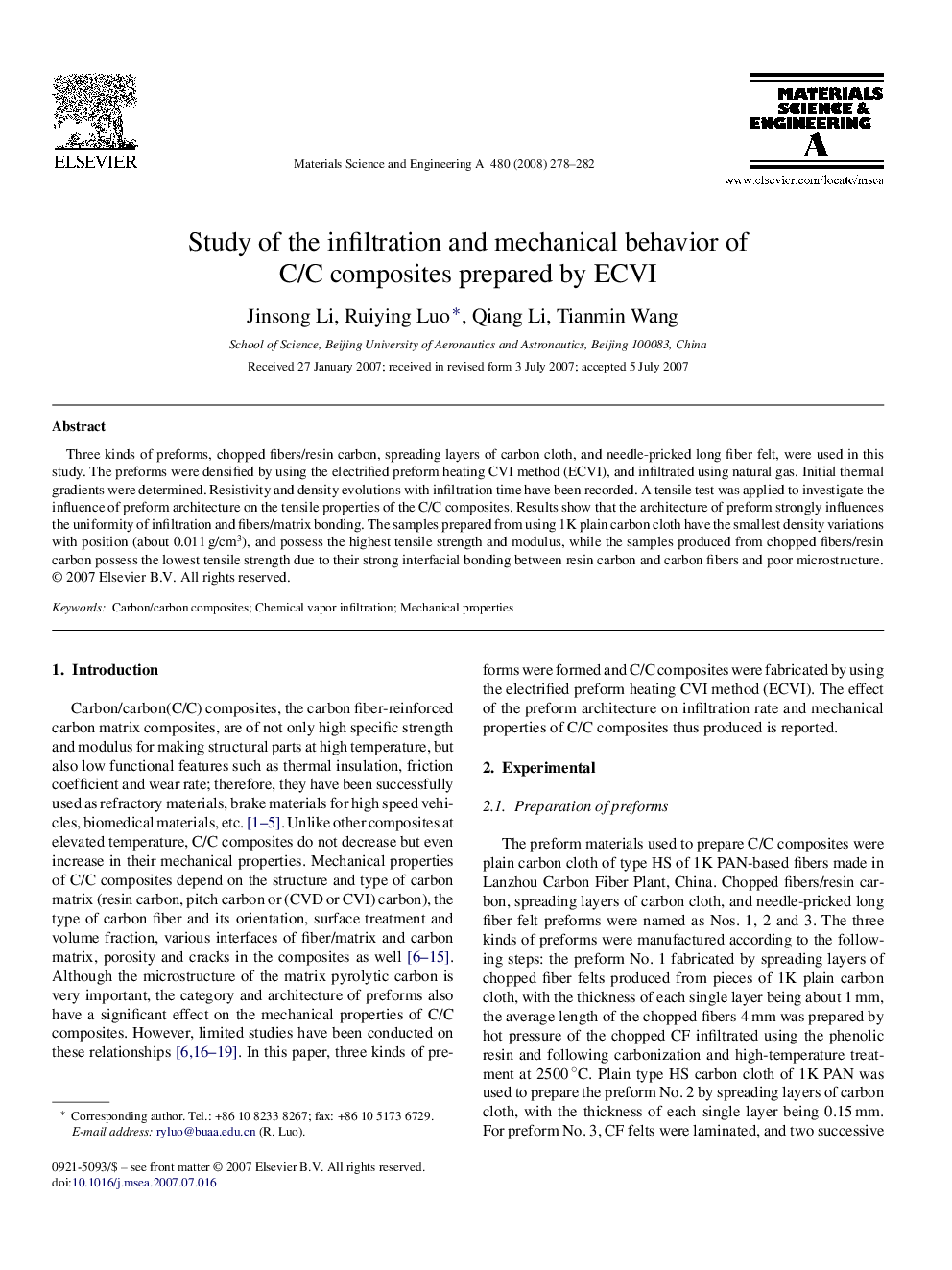| Article ID | Journal | Published Year | Pages | File Type |
|---|---|---|---|---|
| 1582656 | Materials Science and Engineering: A | 2008 | 5 Pages |
Abstract
Three kinds of preforms, chopped fibers/resin carbon, spreading layers of carbon cloth, and needle-pricked long fiber felt, were used in this study. The preforms were densified by using the electrified preform heating CVI method (ECVI), and infiltrated using natural gas. Initial thermal gradients were determined. Resistivity and density evolutions with infiltration time have been recorded. A tensile test was applied to investigate the influence of preform architecture on the tensile properties of the C/C composites. Results show that the architecture of preform strongly influences the uniformity of infiltration and fibers/matrix bonding. The samples prepared from using 1K plain carbon cloth have the smallest density variations with position (about 0.011Â g/cm3), and possess the highest tensile strength and modulus, while the samples produced from chopped fibers/resin carbon possess the lowest tensile strength due to their strong interfacial bonding between resin carbon and carbon fibers and poor microstructure.
Related Topics
Physical Sciences and Engineering
Materials Science
Materials Science (General)
Authors
Jinsong Li, Ruiying Luo, Qiang Li, Tianmin Wang,
